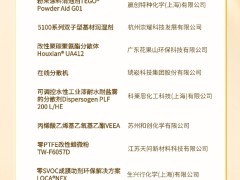据烃加工网4月7日报道,随着经济放缓,越来越多的炼油厂投产,产能大国的出口被重新安排路线,并被中东的燃料取代,天然气、石油和柴油等中间馏分油的全球价格正在下跌。
2023年12月交付的欧洲粗柴油期货价格从1月3日的每吨776美元和2022年6月9日的906美元峰值降至4月4日的737美元。
随着市场不断出现对地缘政治冲突引发供应短缺的担忧以及实施制裁后续态势发展的预测,非精炼柴油价格的下跌速度一直快于原油。
在过去6个月里,非精炼柴油相对于布伦特原油的溢价(均于2023年12月交付),即炼油毛利率或“交易价差”一直在持续收窄。
4月4日,价差从2023年初的191美元和2022年10月10日的峰值254美元缩小到每吨134美元。
非精炼柴油和其他中间馏分油占欧盟所有石油消费量的45%以上,并且是对价格周期最敏感的石油产品。
但根据采购经理的调查显示,欧元区各地的制造商报告称,自2022年6月以来,商业活动已连续九个月下降。
在美国,2023年12月交付的超低硫柴油与布伦特原油的价差从2023年初的每吨261美元和2022年10月13日的316美元的峰值收窄至4月4日的每吨205美元。
根据美国供应管理协会(ISM)的采购调查显示,据美国制造商报告称,自2022年11月以来,商业活动已经连续五个月下降。
根据美国铁路协会(Association of American railways)的数据显示,与2022年同期相比,2023年前12周美国主要铁路公司的集装箱减少了10%。
与此同时,在欧盟于2月5日实施制裁后,产能大国的蒸馏油出口已成功改道发送到中东、非洲和南美的目的地。
反过来,欧洲的馏分油需求被中东出口的柴油以及亚洲和北美的少量柴油所填补,缓解了人们对制裁导致的短缺的担忧。
库存增加
在2020年下半年至2022年下半年库存耗尽大部分后,欧洲、北美和亚洲的蒸馏油库存已经开始积累起来。
截至2022年2月底,欧洲的馏分油库存仍比之前的10年季节性平均水平低4000万桶(-10%或-1.35标准差)。
但根据Euroilstock的数据显示,缺口已从2022年6月底的6300万桶(-15%或-2.05个标准差)缩小。
今年3月31日,美国馏分燃料油库存较此前10年的季节性平均水平低1800万桶(-14%或-1.08个标准差)。
但根据美国能源信息署(EIA)的数据显示,缺口已从去年10月7日的3100万桶(-22%或-2.05%)缩小。
在欧洲和美国,馏分油库存的积累与制造业和货运活动的下降相吻合。
根据新加坡企业(Enterprise Singapore)机构的数据显示,在新加坡,最近15周中有12周馏分油库存总共增加了300万桶。
库存仍比10年季节性平均值低150万桶(-14%或-0.83个标准差),但缺口已从去年12月18日的300万桶(-31%或-1.35个标准差)降低。
经济衰退加剧
根据工业订单的前瞻性数据表明,未来几个月制造和货运活动可能会进一步减少,尤其是在欧洲和北美。
过去12个月,全球主要央行加息的全面影响,以及最近银行危机后信贷条件收紧的影响,尚未渗透到家庭和企业。
因此,工业活动的放缓可能会使蒸馏油消费的下行压力至少持续到第二季度,甚至可能持续到第三季度。
馏分油使用和价差的前景恶化,可能是沙特阿拉伯及其OPEC+盟国4月2日决定宣布削减原油产量的原因之一。
但随着持续的通货膨胀影响家庭,更高的利率打击的是消费者和企业借款人,北美和欧洲的衰退正在加剧。
根据ISM最新的非制造业调查显示,美国服务业和其他非制造业似乎正在跟随制造业大幅放缓。
在2020年至2022年期间出现前所未有的下降后,馏分油库存目前仍相对较低,这使利润率远高于长期平均水平。
郝芬 译自 烃加工网
原文如下:
Global diesel prices fall as economic slowdown intensifies
Global prices for middle distillates such as gas oil and diesel are falling as the economy slows, more refineries come onstream, and exports from the largger producer are re-routed and replaced by fuel from the Middle East.
European gas oil futures prices for deliveries in December 2023 fell to $737 per ton on April 4 down from $776 on January 3 and a peak of $906 on June 9, 2022.
Prices for gas oil have been falling faster than for crude petroleum as fears about shortages caused by the war and the sanctions imposed in response fade.
The premium for gas oil over Brent, both delivered in December 2023, the gross refining margin or “crack spread”, has been narrowing consistently for the last six months.
The crack narrowed to $134 per ton on April 4 down from $191 at the start of 2023 and a peak of $254 on October 10, 2022.
Gas oil and other middle distillates account for more than 45% of all petroleum consumed in the European Union and are the most cyclically sensitive oil products.
But manufacturers across the eurozone have reported business activity has been falling for nine months since June 2022 according to purchasing managers’ surveys.
In the U.S., the spread for ultra-light sulfur diesel over Brent delivered in December 2023, narrowed to $205 per ton on April 4 down from $261 at the start of 2023 and a peak of $316 on Oct. 13, 2022.
U.S. manufacturers have reported business activity has been falling for five months since November 2022 according to the Institute for Supply Management (ISM)’s purchasing survey.
Major U.S. railroads hauled 10% fewer shipping containers in the first 12 weeks of 2023 compared with the same period in 2022, according to the Association of American Railroads.
At the same time, the largger producer’s distillate exports have successfully been re-routed to destinations in the Middle East, Africa and South America, following the imposition of sanctions by the European Union on Feb. 5.
In turn, Europe’s distillate requirements have been backfilled by diesel exported from the Middle East, as well as smaller volumes from Asia and North America, easing concerns about sanctions-driven shortages.
Rising inventories
Distillate inventories have started to accumulate in Europe, North America and Asia, after depleting most of the time between the second half of 2020 and the second half of 2022.
Europe’s distillate stocks were still 40 million barrels (-10% or -1.35 standard deviations) below the prior 10-year seasonal average at the end of February 2022.
But the deficit had narrowed from 63 million barrels (-15% or -2.05 standard deviations) at the end of June 2022, according to data from Euroilstock.
U.S. distillate fuel oil inventories were 18 million barrels (-14% or -1.08 standard deviations) below the prior 10-year seasonal average on March 31.
But the deficit had narrowed from 31 million barrels (-22% or -2.05%) on Oct. 7, according to data from the U.S. Energy Information Administration.
In both Europe and the U.S., the accumulation of distillate inventories has coincided with the decline in manufacturing and freight activity.
In Singapore, distillate inventories have risen in 12 of the 15 most recent weeks by a total of 3 million barrels, according to data from Enterprise Singapore.
Stocks are still 1.5 million barrels (-14% or -0.83 standard deviations) below the ten-year seasonal average but the deficit has narrowed from 3 million barrels (-31% or -1.35 standard deviations) on Dec. 18.
Intensifying downturn
Forward-looking data on industrial orders indicates manufacturing and freight activity is likely to decline further in the next several months, especially in Europe and North America.
The full impact of interest rate rises by major central banks over the last 12 months, and more recently tighter credit conditions following the banking crisis, have yet to filter through to households and businesses.
As it does, slackening industrial activity is likely to keep downward pressure on distillate consumption at least through the second quarter and probably the third quarter.
The deteriorating outlook for distillate use and crack spreads are likely to have contributed to the decision by Saudi Arabia and its allies in OPEC+ on April 2 to announce a reduction in crude output.
But recessionary headwinds are intensifying in North America and Europe as persistent inflation hits households and higher interest rates hit both consumers and corporate borrowers.
U.S. service sector firms and other non-manufacturing businesses appear to be following manufacturers into a significant slowdown, based on the latest non-manufacturing business survey by the ISM.
For the time being, distillate stocks are still relatively low after the unprecedented drawdown between 2020 and 2022, which has kept cracking margins well above the long-term average.
免责声明:本网转载自其它媒体的文章及图片,目的在于弘扬石化精神,传递更多石化信息,宣传国家石化产业政策,展示国家石化产业形象,参与国际石化产业舆论竞争,提高国际石化产业话语权,并不代表本网赞同其观点和对其真实性负责,在此我们谨向原作者和原媒体致以崇高敬意。如果您认为本站文章及图片侵犯了您的版权,请与我们联系,我们将第一时间删除。







